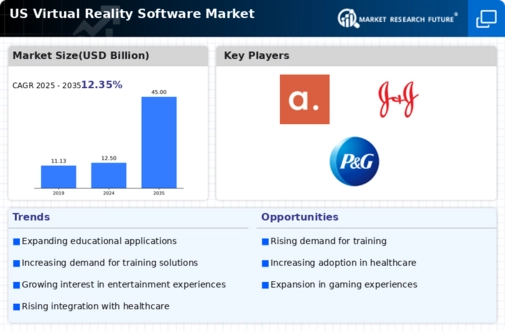The US Virtual Reality Software Market is characterized by rapid technological advancements and an influx of innovative solutions catering to diverse applications such as gaming, education, and enterprise training. This market has witnessed extensive growth driven by increased investment in augmented and virtual reality technologies. Companies in this space are focusing on improving user experiences, which has led to significant competition among key players. The competitive landscape is shaped by various factors including product differentiation, pricing strategies, and the ability to leverage data analytics for more immersive and interactive virtual environments.
As a result, organizations are continually refining their offerings to maintain a competitive edge and meet the evolving demands of consumers.
Oculus has emerged as a prominent player within the US Virtual Reality Software Market, establishing itself through its robust portfolio of VR hardware and software solutions. The company has built strong brand recognition and customer loyalty through its innovative products that deliver high-quality experiences. Strengths of Oculus include their extensive library of content, which encompasses games, simulations, and educational programs tailored to various demographics. Additionally, Oculus benefits from a strong ecosystem that integrates seamlessly with its hardware, ensuring a user-friendly experience.
The company prioritizes continued investment in research and development to enhance existing products and introduce new features, thereby reinforcing its market presence and competitive position.
Pimax is another notable contender in the US Virtual Reality Software Market, recognized for its commitment to delivering high-resolution VR headsets aimed at enthusiasts and professionals. Pimax emphasizes immersive experiences through key products such as their wide-field-of-view headsets that cater to advanced gaming and simulation applications. The company has established a solid presence within niche segments and leverages community feedback to refine its offerings. Another strength of Pimax lies in its active engagement in collaborations and partnerships, enhancing its technological capabilities and market outreach.
The firm has also explored strategies for mergers and acquisitions to bolster its development initiatives and expand its product range. This focus on innovation and adaptability allows Pimax to gain traction and compete effectively in the dynamic landscape of the US Virtual Reality Software Market.














Leave a Comment